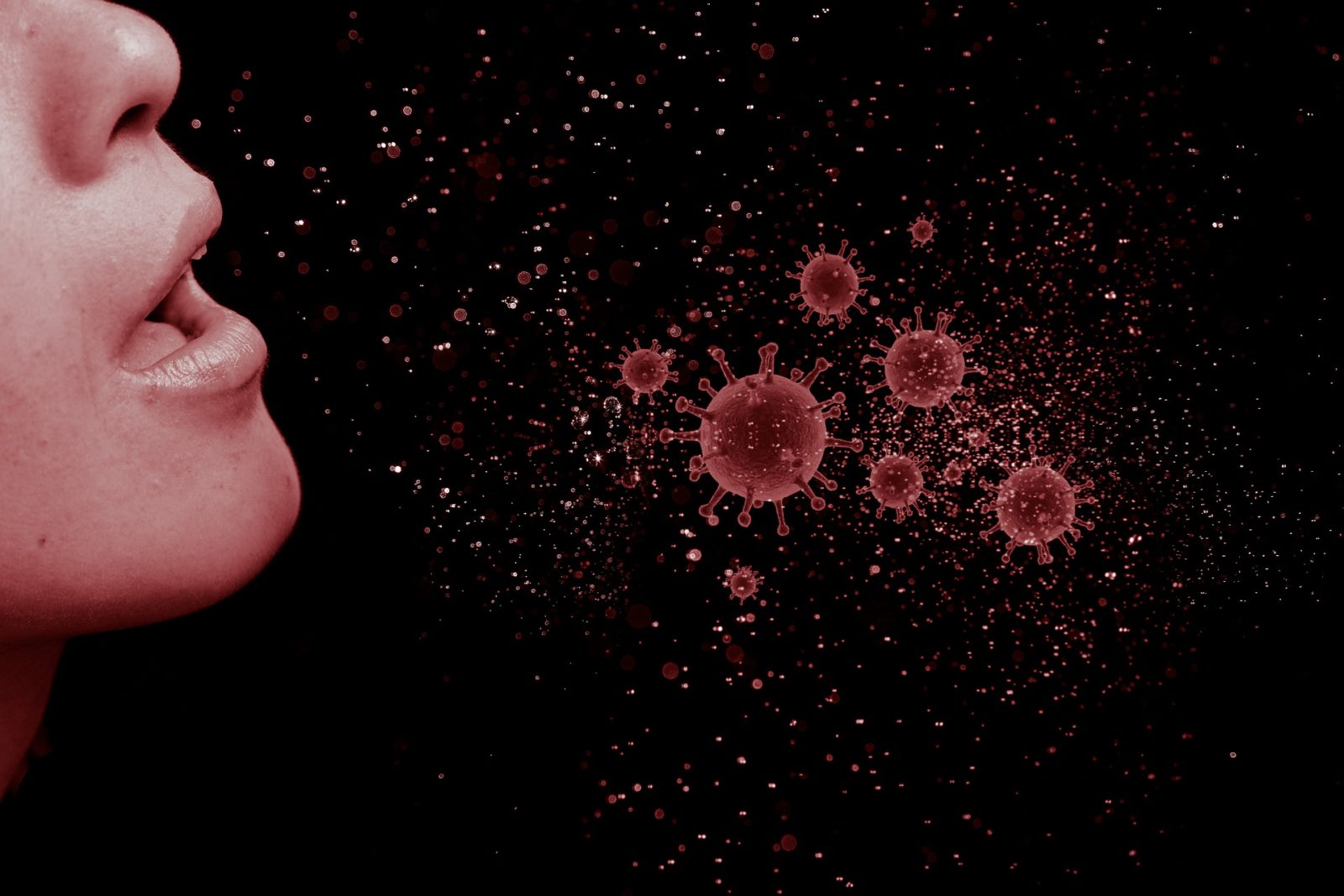
Representative image. Image: mohamed_hassan/pixabay.
The novel coronavirus spreads through droplets and aerosols from person to person. It was originally believed that the spread was happening solely via droplets and fomites (infected surfaces), but data from super-spreading events and contact-tracing efforts around the world clearly showed that airborne/aerosol transmission could be a big factor in the pandemic dynamics.
In July 2020, 239 scientists signed a letter written to the WHO to recognise the airborne spread of the virus and called upon governments and organisations to address the issue. The signatories included physicists, environmental engineers, chemists, doctors and epidemiologists.
According to the WHO, droplets are 5-10 micrometers wide and aerosols, less than 5 micrometers wide. Both have the ability to carry viral loads. The only difference between the two is size. Scientists previously thought that only ballistic droplets [footnote]Those that can be pulled down by the force of gravity [/footnote] emitted while coughing, sneezing, heavy breathing, etc. by COVID-19 patients and which land on mucosal surfaces, like eyes and the mouth, could make it to the respiratory tract.
Officials effected physical distancing guidelines and mask-mandates to prevent the spread of droplets within closed spaces. However, studies of super-spreading events in bars, indoor parties and in hospitals all pointed to aerosol- as well as droplet-mediated spread.
The cases of the transmission of COVID-19 in a call centre in South Korea and in a hospital with COVID-19 patients, which researchers at the University of Florida studied, clearly showed that the virus is transmitted even when people maintain a distance of six feet from each other. In the latter, the team collected air samples 2-4.8 m (6.5-15.7 ft) away from patients, extracted the viruses from those samples and then their genes to confirm the presence of the novel coronavirus.
Aerosols are generated when a plume of respiratory particles containing the virus are released by heavy breathing, coughing and sneezing from the pharynx. The pharynx contains a remarkably high viral load during the pre-symptomatic and asymptomatic phases of a COVID-19 infection. Aerosol particles linger in the air for hours. In time, they may evaporate further to become even smaller, and be influenced less by gravity and more by gentle breezes, etc. Thus, they stay aloft in the air for longer, especially in poorly ventilated indoor spaces like bars, restaurants, etc.
We need to address aerosol transmission immediately, especially to keep asymptomatic people, who do shed the virus when they breathe, speak, etc., from leading to more and more secondary infections.
We can detect potential aerosol accumulation by monitoring CO2 gas concentration, since the latter – which we exhale – could be a proxy for the former. Whenever the CO2 concentration is seen to be increasing, it means the gas, as well as aerosols, is building up without escaping the room, and needs to be removed quickly.
Using this and other tools, we must improve air circulation in indoor spaces and ventilate them better – and we must wear a mask every time we step out even if we’re able to maintain a physical distance from others. Speakers shouldn’t remove their masks when talking onstage and, though we may not like it, special occasions like religious gatherings and weddings must be restricted to a small group of people.
Also read: If a Virus Enters Your Poop, Would It Mean Flushing Could Spread the Virus?
An important specific intervention concerns air-conditioners. Instead of recirculating the same air, they must be modified to refresh the volume of air once every five minutes. Inlets and outlets for the conditioned air should be fit with high-efficiency particulate filters. Where possible, people ought to use natural-air inlets – such as by keeping windows and doors open – to dilute the viral load, especially those attached to commonly used corridors in multi-storied residential and office complexes, conference halls, bathrooms, etc.
There is also some evidence that flushing toilets could throw up a plume of viral particles if the person who just used the toilet has COVID-19. We should also avoid the use of air-blown dryers to dry our hands as they could kick up virus-bearing aerosols into the air.
Finally, there is no doubt that in sunlight, aerosols can evaporate entirely and leave behind the virus, which will eventually die. But on the flip side, as summer ends and the monsoon begins, atmospheric humidity goes up and overcast skies block the Sun, creating optimal conditions for aerosols to persist in the air for longer.
Update: This article previously stated that air-conditioners should refresh their air volume once every 12 hours. It is actually once every five minutes, and this article was updated thus at 4:50 pm on September 10, 2020.
K. Nagaiah is the chief scientist at the CSIR-Indian Institute of Chemical Technology, Hyderabad. G. Srimannarayana is a retired professor at the department of chemistry, Osmania University, Hyderabad.

